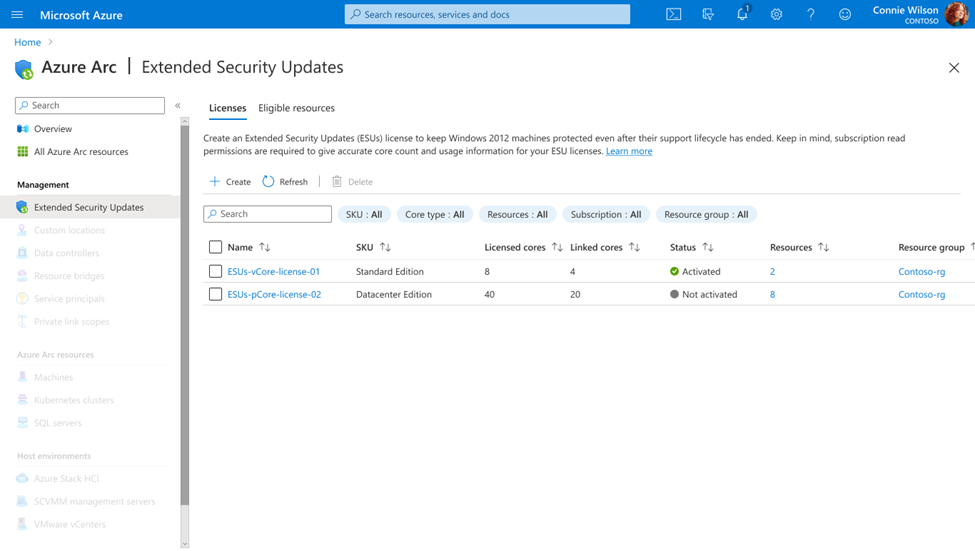Coming Soon: Transition to WS2012/R2 ESUs enabled by Azure Arc for Year 2 and beyond

Announced during last week’s Windows Server Summit 2024, customers will be able to transition to Azure Arc for WS2012 Extended Security Updates enabled by Azure Arc for Year 2 if they had purchased Year 1 of Extended Security Updates for Volume Licensing. This experience will ask customers to supply their Invoice Id, corresponding to WS2012 ESU purchases from Volume Licensing.
With its pay as you go flexibility as an Azure billed service and inclusion of Azure management services like Azure Update Manager and Machine Configuration at no additional cost, WS2012 ESUs enabled by Azure Arc offer financial and experience benefits to customers. This is especially critical to support customers in their journey of migrating and modernizing End of Life infrastructure to Azure.
This transition experience is coming soon! To prepare, your organization can begin to review the connectivity requirements for Azure Arc, whitelisting the necessary endpoints, and deploying the Connected Machine agent to eligible Windows Server 2012/R2 Standard and Datacenter machines using at-scale options like Configuration Manager and Group Policy.
Beyond the announcement, we had three sessions covering Azure Arc capabilities during last week’s Windows Server Summit:
- Cloud operations for Windows Server through Azure Arc
- Keeping Windows Server 2012 and 2012 R2 protected after EOS
- Automate on-premises Windows Server from the cloud using Azure Arc
Empowering Windows Server customers to modernize to Azure management, Azure Arc is the bridge bringing cloud capabilities to Windows Servers across hybrid, multicloud, and edge environments. To sign up for feedback and notification when the experience becomes available, register at https://aka.ms/WS2012ArcESUTransition/.
Published on:
Learn moreRelated posts
Automating Business PDFs Using Azure Document Intelligence and Power Automate
In today’s data-driven enterprises, critical business information often arrives in the form of PDFs—bank statements, invoices, policy document...
Azure Developer CLI (azd) Dec 2025 – Extensions Enhancements, Foundry Rebranding, and Azure Pipelines Improvements
This post announces the December release of the Azure Developer CLI (`azd`). The post Azure Developer CLI (azd) Dec 2025 – Extensions En...
Unlock the power of distributed graph databases with JanusGraph and Azure Apache Cassandra
Connecting the Dots: How Graph Databases Drive Innovation In today’s data-rich world, organizations face challenges that go beyond simple tabl...
Azure Boards integration with GitHub Copilot
A few months ago we introduced the Azure Boards integration with GitHub Copilot in private preview. The goal was simple: allow teams to take a...
Microsoft Dataverse – Monitor batch workloads with Azure Monitor Application Insights
We are announcing the ability to monitor batch workload telemetry in Azure Monitor Application Insights for finance and operations apps in Mic...
Copilot Studio: Connect An Azure SQL Database As Knowledge
Copilot Studio can connect to an Azure SQL database and use its structured data as ... The post Copilot Studio: Connect An Azure SQL Database ...
Retirement of Global Personal Access Tokens in Azure DevOps
In the new year, we’ll be retiring the Global Personal Access Token (PAT) type in Azure DevOps. Global PATs allow users to authenticate across...
Azure Cosmos DB vNext Emulator: Query and Observability Enhancements
The Azure Cosmos DB Linux-based vNext emulator (preview) is a local version of the Azure Cosmos DB service that runs as a Docker container on ...
